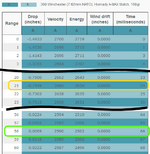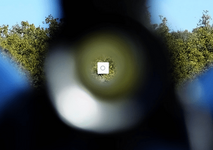- Messages
- 5,371
- Reactions
- 7,754
Your friend doesn't need $200 for a laser boresight device, but could pick up a used collimitor at a gunshow for $10 and probably be just fine.
I get your point, but at some point is what you are doing worth the time it takes? For me, having been a gunsmith for ten years and already having access to very high quality measuring tools, it's still not worth it. Too much time, even for a personal gun. A bore collimitor was one of the first tools I bought.
But you are right, like I said, in theory, removing a bunch of possible variables, your method would work.
I get your point, but at some point is what you are doing worth the time it takes? For me, having been a gunsmith for ten years and already having access to very high quality measuring tools, it's still not worth it. Too much time, even for a personal gun. A bore collimitor was one of the first tools I bought.
But you are right, like I said, in theory, removing a bunch of possible variables, your method would work.













